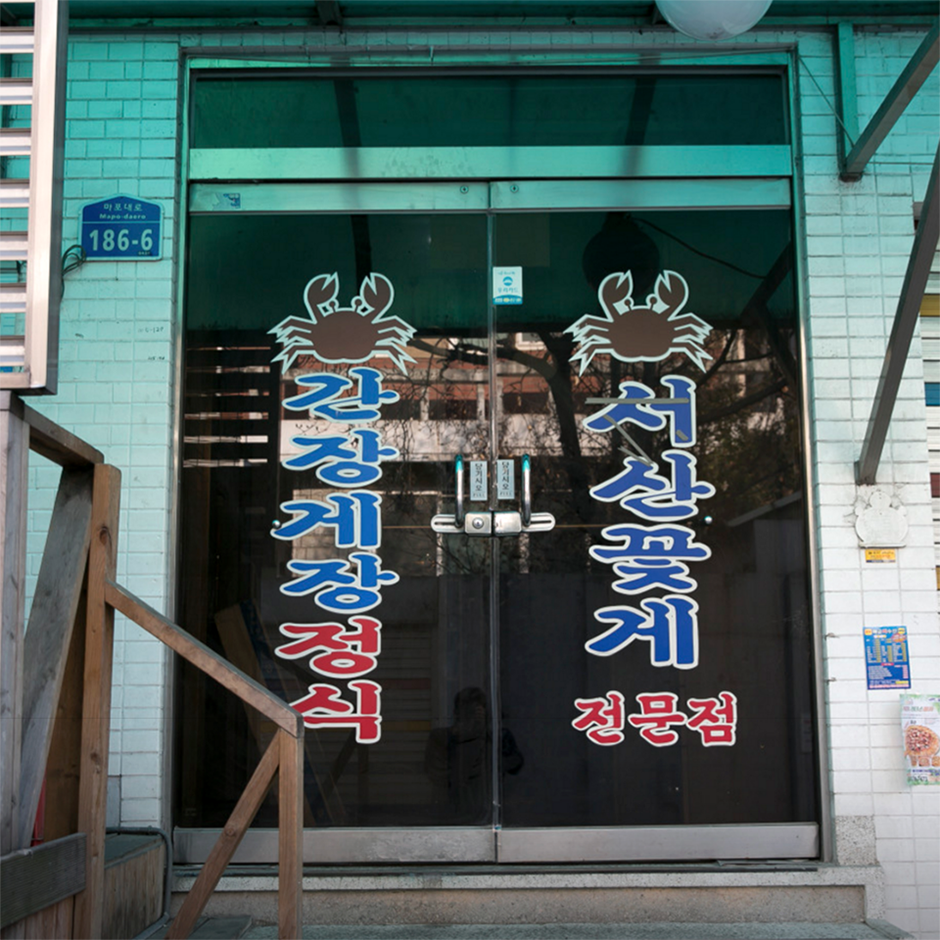Jinmi Sikdang (진미식당)
9.4Km 2024-02-27
186-6 Mapo-daero, Mapo-gu, Seoul
Jinmi Sikdang is a specialty restaurant known for its exclusive focus on gejang (marinated crab), using only the finest blue crabs from the Seohae Coast. The restaurant prides itself on preparing only the amount of crab needed for the day, ensuring freshness, so it's advisable to make reservations before visiting, especially during peak hours. Known for its consistent quality and unwavering taste, Jinmi Sikdang continues to receive steady love from its customers.
Worksout - Apgujeong Branch [Tax Refund Shop] (웍스아웃 압구정)
9.4Km 2024-04-22
20-4, Seolleung-ro 157-gil, Gangnam-gu, Seoul
-
Lumi Aeche Eyewear - Apgujeong Branch [Tax Refund Shop] (루미애체 압구정)
9.4Km 2024-04-17
867, Nonhyeon-ro, Gangnam-gu, Seoul
-
DM Plastic Surgery (디엠성형외과)
9.4Km 2025-10-23
(2nd Floor), 158 Apgujeong-ro, Gangnam-gu, Seoul
DM Plastic Surgery is a clinic run by a doctor from Yonsei University College of Medicine, the first university in Korea to establish a plastic surgery department.
As a former professor of plastic surgery at Severance Hospital of Yonsei University College of Medicine for 16 years and a board member of the Korean Society of Plastic and Reconstructive Surgeons, the chief director of DM is always striving to be a model in the medical industry. We promise to spare no effort, guided by the tenet of diligence and sincerity, to advance plastic surgery technology in Korea and to fulfill our responsibilities as plastic surgeons.
Seoul Hyochang Park (서울 효창공원)
9.4Km 2024-07-09
177-18 Hyochangwon-ro, Yongsan-gu, Seoul
+82-2-2199-7608
Hyochang Park covers 122,245 square meters spanning across Hyochang-dong and Cheongpa 2-dong. It is a historic landmark that once contained several royal tombs, and was known at that time as Hyochangwon. The cemeteries that were originally located in Hyochangwon belonged to Crown Prince Munhyo, King Jeongjo’s first son who died at the age of five; Royal Noble Consort Uibin of the Seong Clan, King Jeongjo’s royal concubine and Crown Prince Munhyo’s mother; Royal Noble Consort Sugui of the Park Clan, King Sunjo’s royal concubine; and her daughter Princess Yeongon. The royal tombs were moved to Seooreung Tombs in the waning months of the Japanese colonial period. The Japanese empire began the development of Hyochangwon into a park in 1924, and the Japanese governor-general officially assigned the site as a park in 1940.
Presently, several of Korea’s greatest leaders are buried in Hyochang Park. The remains mostly belong to independence activists including Yoon Bong-gil, Lee Bong-chang, and Baek Jeong-gi, whose graves are collectively known as Samuisa Tomb. A statue of Lee Bong-chang has been built in the graveyard. Among the other patriotic martyrs who are interred in the park are Kim Gu and some of the key figures of the provisional government such as Lee Dong-nyeong, Cha I-seok, and Cho Seong-hwan. An ancestral shrine named Uiyeolsa has been built along the main gate and holds the portraits of the deceased independence activists.
Mowoolim Hair Clinic [Tax Refund Shop] (모우림의원)
9.4Km 2024-06-27
868, Nonhyeon-ro, Gangnam-gu, Seoul
-
Carhartt WIP - Apgujeong Branch [Tax Refund Shop] (칼하트WIP 압구정)
9.4Km 2024-04-18
1F, 21, Apgujeong-ro 54-gil, Gangnam-gu, Seoul
-
Miss Gee Collection [Tax Refund Shop] (미스지콜렉션)
9.4Km 2024-04-23
12, Apgujeong-ro 60-gil, Gangnam-gu, Seoul
-
Miu Miu - Cheongdam Branch [Tax Refund Shop] (미우미우 청담점)
9.4Km 2024-04-23
439, Apgujeong-ro, Gangnam-gu, Seoul
-

![Worksout - Apgujeong Branch [Tax Refund Shop] (웍스아웃 압구정)](http://tong.visitkorea.or.kr/cms/resource/33/2879533_image2_1.jpg)
![Lumi Aeche Eyewear - Apgujeong Branch [Tax Refund Shop] (루미애체 압구정)](http://tong.visitkorea.or.kr/cms/resource/87/2879687_image2_1.jpg)

![Tune Clinic [Tax Refund Shop] (논현튠의원)](http://tong.visitkorea.or.kr/cms/resource/88/3313688_image2_1.jpg)
![Mowoolim Hair Clinic [Tax Refund Shop] (모우림의원)](http://tong.visitkorea.or.kr/cms/resource/61/3313861_image2_1.jpg)
![Carhartt WIP - Apgujeong Branch [Tax Refund Shop] (칼하트WIP 압구정)](http://tong.visitkorea.or.kr/cms/resource/41/2879541_image2_1.jpg)
 English
English
 한국어
한국어 日本語
日本語 中文(简体)
中文(简体) Deutsch
Deutsch Français
Français Español
Español Русский
Русский